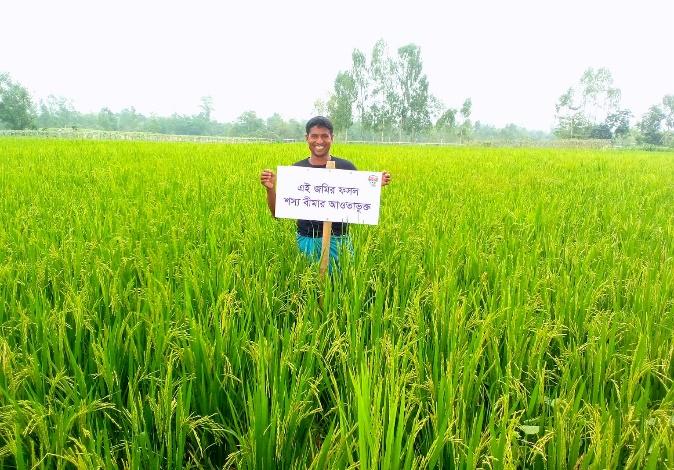Promoting Risk Mitigation Measures for Climate Change Adaptation (Surokkha) – Bangladesh
Donor:Swiss Agency for Development and Cooperation (SDC) and SFSA
Tenure:16 Sept 2018 - 15 Sept 2022

| Duration | 16 September 2018 – 15 September 2022 |
| Location | Rangpur, Rajshahi, Khulna and Mymensingh divisions (16 Districts, 64 sub districts) |
| Outreach | Target: 233,000 farmers |
| Partners | Green Delta Insurance Company Ltd. (GDIC), Sadharan Bima Corporation (SBC), Syngenta Bangladesh Ltd., BRAC, Gram Unnayan Karma (GUK), Eco-Social Development Organization (ESDO), GBK-E, Ejab Agro Ltd. |
Context:
Being one of the largest deltas across the world, Bangladesh shares both risks and opportunities associated with natural forces and factors, especially when a significant part of its population still thrives on agro-based activities and so does its economy. Farmers – more specifically smallholder farmers – are most vulnerable to natural caprices and adverse meteorological consequences which commonly include floods, cyclone, tidal surge, drought, heat waves, and untimely rainfall. Smallholder farmers in Bangladesh face these challenges in their crop production. These disrupt planting and harvesting schedules, leading to crop losses. Untimely rainfall or prolonged dry spells can either delay germination or cause crops to wither, reducing yields. This unpredictability hinders their ability to plan effectively, increasing vulnerability to food insecurity and economic instability, especially for those already living on the margins.
To transfer these weather risks, the “Promoting Risk Mitigation Measures for Climate Change Adaptation” (Surokhha) project focused on introducing innovative risk adaptation strategies in Bangladesh. Co-funded by the Swiss Agency for Development and Cooperation (SDC) and the Syngenta Foundation for Sustainable Agriculture (SFSA), the project focused on enhancing resilience and securing livelihoods for smallholder farmers. SFSA Bangladesh was the implementer of the project, while Swisscontact served as the managing agent responsible for monitoring and financial management. The initiative not only offered insurance to farmers but also focused on enhancing the development of the crop insurance market.
Objectives:
To pilot and test various index-based crop insurance products and distribution channels, as well as develop risk mitigation methods tailored for farmers cultivating Rice (Aman and Boro), Potato, and Maize.
Key Activities:
- Weather index-based crop insurance product development.
- Capacity building of insurer, aggregators and other stakeholders.
- Farmers’ literacy meeting and awareness campaign.
- Market development and risk management studies.
Achievements:
- 421,767 farmers insured for Rice, Potato and Maize, including 105,208 (25%) women.
- 21 weather index insurance products were developed.
- 1,392,697 farmers became aware, of whom 33% were women.
- 02 insurers on-boarded, one from the public sector and one from the private sector.
- 04 different insurance distribution channels were implemented – MFI-linked, input-linked, service-linked and output-linked.
- Farmers accessed crop insurance both voluntarily and as bundled products with agricultural inputs.
- 6.60 decimals (average) per farmer land were insured.
- 149,343 farmers received payouts amounting to BDT 84,016,858 (USD 700,140).
- Ensured weather forecasting and agri-advisory services to the insured farmers as a value-added service.


Share

